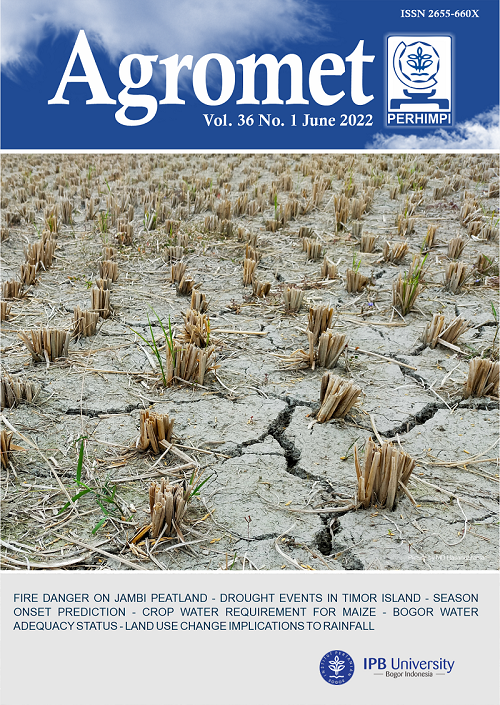Drought Events in Western Part of Timor Island Indonesia
Abstract
Drought is a below-averaged condition of water availability, which has detrimental impacts on many sectors. Many studies have been performed on drought analysis in Indonesia, yet knowledge about drought in western Timor is still limited. This research carried out a historical meteorological drought analysis based on a 3-month Standardized Precipitation Index (SPI) and Standardized Precipitation Evapotranspiration Index (SPEI) using global climate data for 1989-2018. The index value was then categorized into three groups: moderate, severe, and extreme. We assessed: (i) the influence of El Niño phenomena to drought events, (ii) drought class frequency, and (iii) drought trend. Based on historical data, western Timor had a monsoonal pattern with dominant dry period, which occurred in April to November. The results showed that the drought events were mostly influenced by El Niño. Seasonally, El Niño not only increased the drought frequency in July-August (JJA) season, but also in other seasons. In El Niño year of 2015, drought covered most parts of study area during September-November (SON) season, especially in the western part. Dry conditions increased in June, reached maximum in September-November, and decreased in December. Other findings show that an extreme drought consistently had a downtrend, while the moderate drought had upward trends. Spatiotemporal drought analysis using SPI and SPEI showed similar patterns, SPEI detected a higher frequency of drought classes compared to SPI. This study suggests that knowledge on drought-related El Niño will benefit on drought mitigation action in the future.
Authors

This work is licensed under a Creative Commons Attribution-NonCommercial 4.0 International License.

